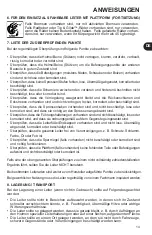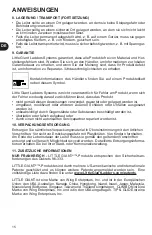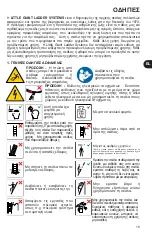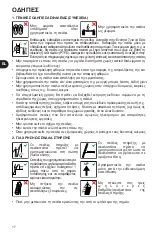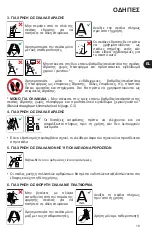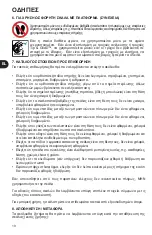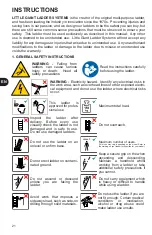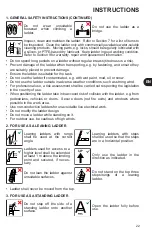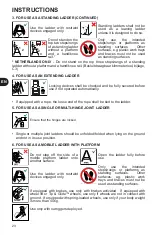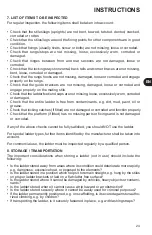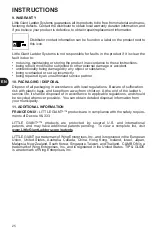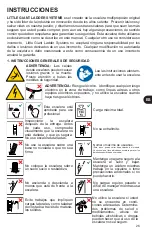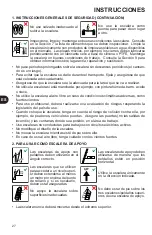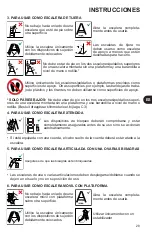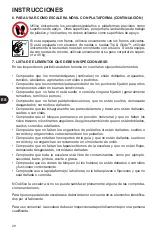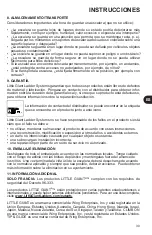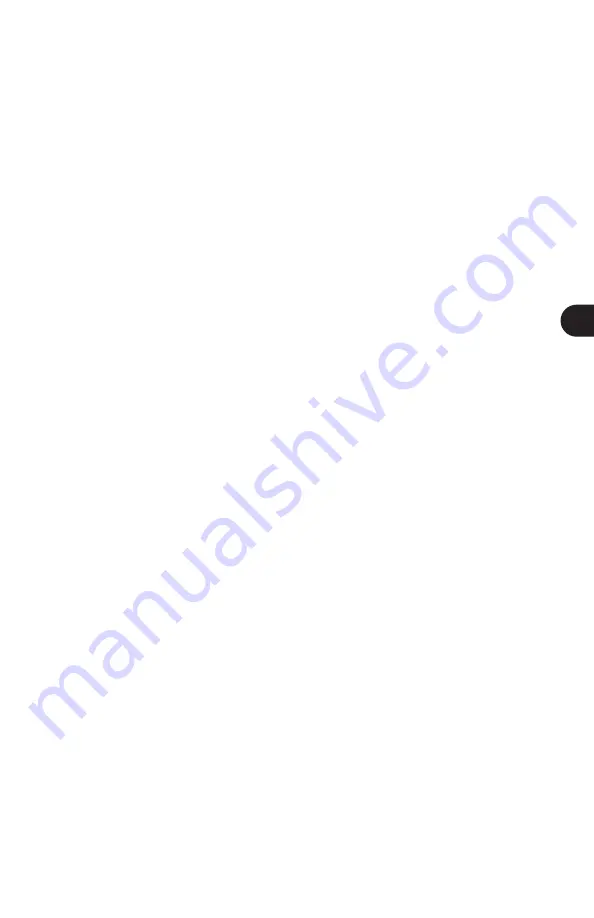
EN
INSTRUCTIONS
7. LIST OF ITEMS TO BE INSPECTED
The important considerations when storing a ladder (not in use) should include the
following:
•
Is the ladder stored away from areas where its condition could deteriorate more rapidly,
e.g. dampness, excessive heat, or exposed to the elements?
•
Is the ladder stored in a position which helps it to remain straight, e.g. hung by the stiles
on proper ladder brackets or laid on a flat clutter free surface?
•
Is the ladder stored where it cannot be damaged by vehicles, heavy objects or contami-
nants?
•
Is the ladder stored where it cannot cause a trip hazard or an obstruction?
• Is the ladder stored securely where it cannot be easily used for criminal purposes?
•
If the ladder permanently positioned, e.g. on scaffolding, is it secured against unautho-
rized climbing, e.g. by children?
•
If transporting the ladder, is it securely fastened in place, e.g. with lashing straps?
8. STORAGE / TRANSPORTATION
For regular inspection, the following items shall be taken into account:
•
Check that the stiles/legs (uprights) are not bent, bowed, twisted, dented, cracked,
corroded or rotten.
•
Check that the stiles/legs around the fixing points for other components are in good
condition.
•
Check that fixings (usually rivets, screw or bolts) are not missing, loose or corroded.
•
Check that rungs/steps are not missing, loose, excessively worn, corroded or
damaged.
• Check that hinges between front and rear sections are not damaged, loose or
corroded.
•
Check that the locking stays horizontal, back rails and corner braces are not missing,
bent, loose, corroded or damaged.
•
Check that the rungs hooks are not missing, damaged, loose or corroded and engage
properly on the rungs.
•
Check that the guide brackets are not missing, damaged, loose or corroded and
engage properly on the mating stile.
•
Check that the ladder feet/end caps are not missing, loose, excessively worn, corroded
or damaged.
•
Check that the entire ladder is free from contaminants, e.g. dirt, mud, paint, oil or
grease.
• Check that locking catches (if fitted) are not damaged or corroded and function properly
• Check that the platform (if fitted) has no missing parts or fixings and is not damaged
or corroded.
If any of the above checks cannot be fully satisfied, you should NOT use the ladder.
For special ladder types, further items identified by the manufacturer shall be taken into
account.
For commercial use, the ladder must be inspected regularly by a qualified person.
24
Summary of Contents for CLIMB ON EN 131
Page 1: ...EN 131 EN 14183...
Page 2: ......
Page 4: ...AR 1...
Page 5: ...AR 2...
Page 6: ...AR 3...
Page 7: ...AR 4...
Page 8: ...AR 5...
Page 19: ...EL LITTLE GIANT LADDER SYSTEMS 1970 Little Giant Ladder Systems 1 16...
Page 20: ...EL 1 2 1 7 PTFE 9 17...
Page 21: ...EL 3 18 4 5 6 Besluit draagbaar klimmeterieel bijlage C3 EN ISO 7010 PO24 1 2 1 2 NL 3...
Page 22: ...EL 19 EN ISO 7010 PO24 Tip Glide 45 STOP 6 7 8...
Page 59: ...RU 56 LITTLE GIANT LADDER SYSTEMS 1970 Little Giant Ladder Systems 1...
Page 60: ...RU 57 1 2 1 7 9...
Page 61: ...RU 58 4 5 6 Besluit draagbaar klimmeterieel bijlage C3 EN ISO 7010 PO24 1 2 1 2 NL 3 3...
Page 62: ...RU 59 Tip Glide 45 EN ISO 7010 PO24 STOP 6 7 8...
Page 69: ......
Page 70: ......
Page 71: ......





